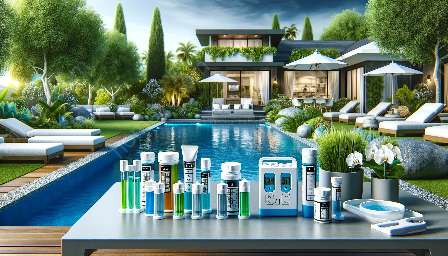Water clarity is a critical aspect of maintaining a safe and enjoyable swimming pool or spa. In this comprehensive guide, we'll explore the importance of water clarity, how it connects to water testing kits, and tips for achieving and maintaining clear water.
The Importance of Water Clarity
Water clarity refers to the transparency and purity of the water in swimming pools and spas. Clear water is not only aesthetically pleasing, but it also indicates a healthy and well-maintained aquatic environment. It allows swimmers to see the pool's bottom and easily identify any obstacles or hazards, thus promoting safety.
Moreover, water clarity is a sign of proper chemical balance and filtration, which are essential for preventing the growth of harmful microorganisms. Cloudy or murky water can be a breeding ground for bacteria and algae, posing health risks to swimmers and requiring more rigorous maintenance.
Water Testing Kits and Clarity Maintenance
Water testing kits are indispensable tools for maintaining water clarity in swimming pools and spas. These kits allow pool owners and maintenance professionals to monitor crucial water parameters such as pH levels, chlorine concentration, alkalinity, and hardness.
By regularly testing the water and adjusting these parameters as needed, pool operators can prevent imbalance issues that could compromise water clarity. For example, inadequate chlorination can lead to cloudy water and bacterial growth, while high pH levels can cause scaling and cloudiness. Water testing kits provide actionable insights for maintaining water clarity and ensuring a safe and inviting swimming experience.
Tips for Achieving and Maintaining Water Clarity
Here are some practical tips for achieving and sustaining clear water in swimming pools and spas:
- Proper Filtration: Ensure your pool or spa filtration system is appropriately sized and functioning effectively to remove debris and impurities.
- Regular Testing: Test the water quality at least once a week, and more frequently during periods of heavy use or adverse weather conditions.
- Chemical Balance: Keep the water chemistry balanced by adjusting pH, chlorine, and other parameters within optimal ranges.
- Cleaning and Maintenance: Skim the water surface, vacuum the pool floor, and clean the walls to remove debris and prevent the accumulation of algae and bacteria.
- Clarifiers and UV Systems: Consider using water clarifiers or ultraviolet (UV) sterilizers to enhance water clarity and combat microbial growth.
Conclusion
Water clarity is more than just a visual aspect of swimming pools and spas—it's a fundamental indicator of water quality and safety. By understanding the importance of water clarity, leveraging water testing kits, and following maintenance best practices, pool and spa owners can create an inviting, healthy aquatic environment for all to enjoy.


